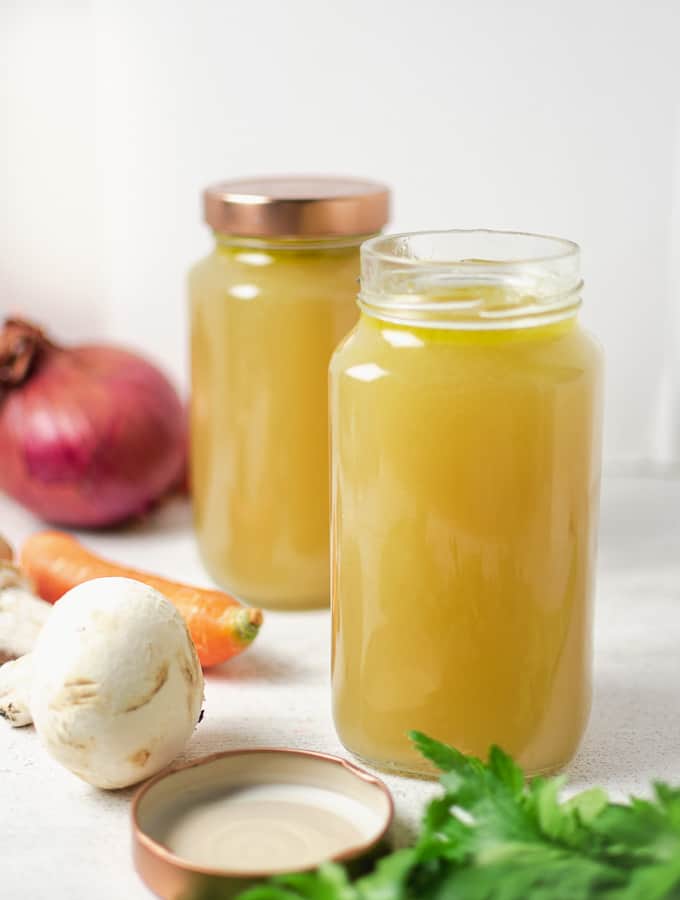
Personally I never use a stock when cooking. Except if it's fresh, healthy, preservative+additive-free all made from scratch like this Vegetable Stock. Truth be told, a stock or broth (they're the same thing really), is one of these things you always feel a bit slack of making (personal experience talking here) but get really handy and do make a difference to the flavor and nutritional value to the food you're cooking.
And what I always say is that if you cook a dish properly and completely from scratch, with fresh, quality ingredients, you don't really need to add any kind of stock to it. There are a few occasions though where a stock is absolutely necessary. Like when...
- Cooking a dish using vegetables that are not in season. Their flavor is going to be a bit bland and some stock is going to make them a lot more delish,
- Don't have time for slow cooking, so you prepare a 30-minute meal. This means the ingredients don't get the proper amount of time needed to release all of their flavors so a stock definitely comes in handy.
But other than flavor, a stock adds a boost of Vitamins and other nutrients to the food as well. Not to mention a beef stock or a chicken stock that is full of collagen and helps heal all body tissues.
The best thing about this Homemade Vegetable Stock is that it can be added almost everywhere and can be made from almost anything (of the vegetable category).
You can make it from leftover scraps of vegetables you use when cooking (what chefs do, following the ritual -we don't throw anything away in a kitchen) or any vegetable you like. And you can use it in vegetable stews and soups, but also to meat dishes as well. Plus it's so ridiculously easy and simple to make that you are going to wonder, why you ever used storebought stock in the first place...
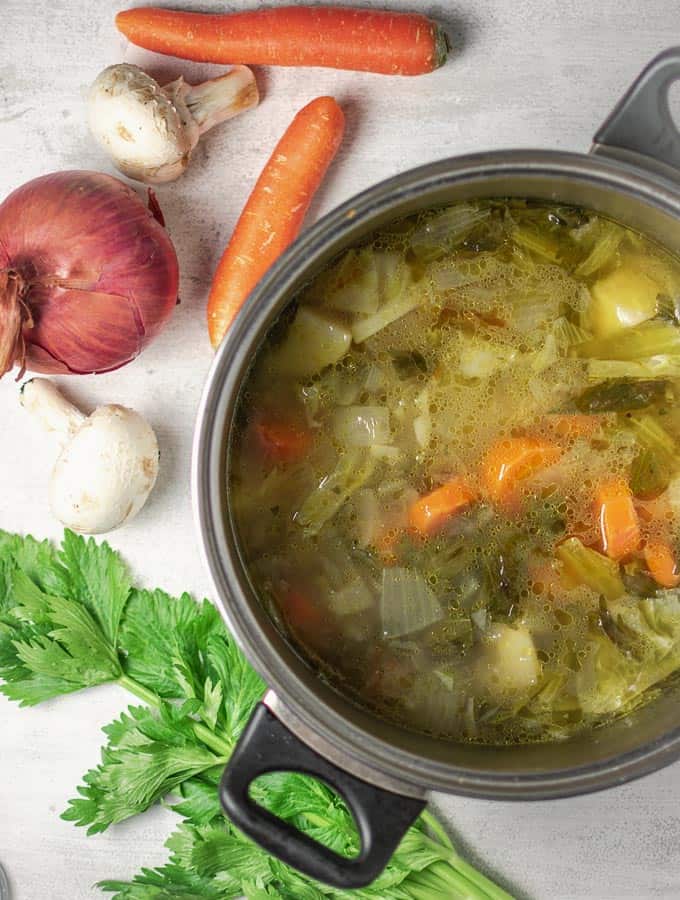
What Vegetables To Use For Making Vegetable Stock
Like I said you can use any vegetable that's the rule every chef follows. But there are a few that are very basic like:
- Onion
- Carrots
- Celery (root, leaves, stick)
- Leeks
- Mushrooms
- Peppers (in moderation)
- Garlic
- Parsley
- Cabbage
And some that are better left out like...
- Potatoes (contain starch, therefore, give a more bland flavor + reduce the life of the stock in the fridge)
- Vegetables like beets and tomatoes (will color the stock and you will only be able to use it in red soups and sauces)
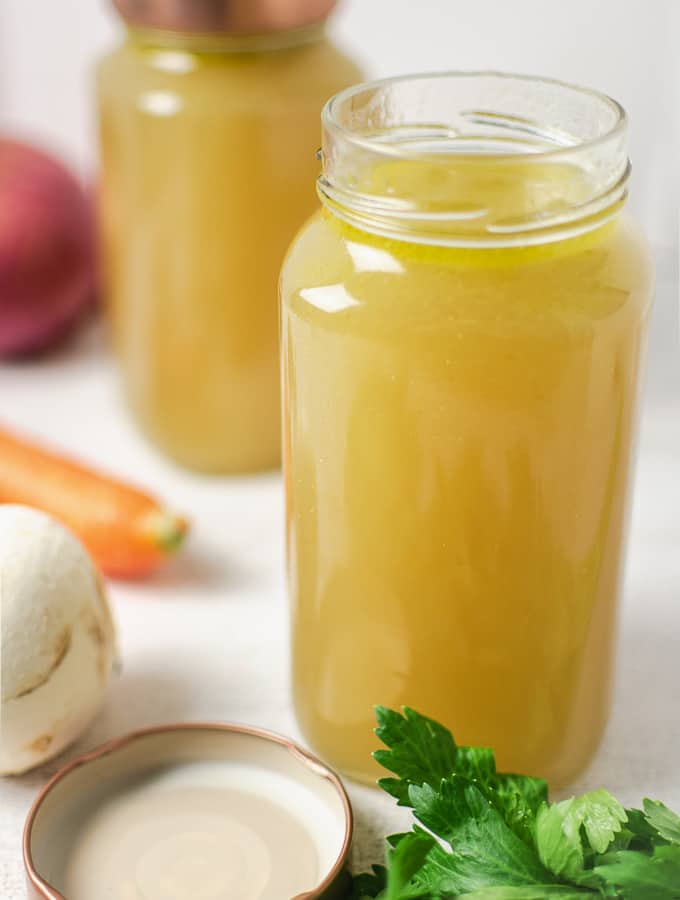
How To Store The Homemade Stock
There are two ways, one is to keep in jars in the fridge for 5-6 days, or store in the freezer.
To store in the freezer, the best way is to use one of these silicone muffins pans. Simply pour the stock in and carefully place it in the freezer. Once it is frozen, you can remove one, or two or as many as you would like to use. The silicone makes it really easy to remove and use right away and just toss it in your cooking pot.
USE IT TO MAKE ⬇
- Healthy Tomato & Carrot Soup
- Greek Fish Soup - Psarosoupa
- Chickpea Soup With Lemon & Oregano
- Greek Spinach Rice - Spanakoryzo
Recipe
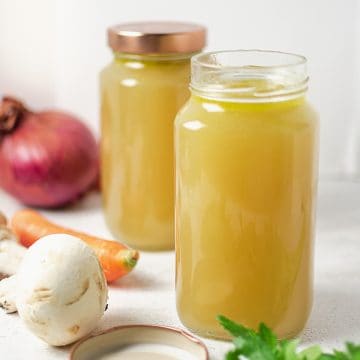
Homemade Vegetable Stock
Ingredients
- 1 large onion
- 2 garlic cloves
- 2 large carrots
- 1 big stick of celery
- 1-2 cups chopped cabbage
- 5-6 mushrooms
- 2 bay leaves
- a sprig of fresh thyme
- olive oil
YOU MAY ALSO ADD:
- zucchinis, eggplants, peas, peppers, leeks
Instructions
- Coarsely chop all the vegetables.
- Heat a good splash of olive oil in a cooking pot over high heat.
- Add the onion and cook until softened. Add the remaining ingredients and cook for 3-4 minutes until they soften slightly.
- Pour in 2 liters of water and season with a bit of salt and pepper.
- Once it starts to boil, reduce heat to medium-low and with the lid on leaving it slightly open on the side, simmer for about 45 minutes.
- Remove from heat and let the stock cool down. Then pass through a sieve and discard the vegetables.
- Store the stock in glass jars in the fridge for 5-6 days or in silicone muffins pans in the freezer.
- Use in soups, stews, and sauces.
Nutrition
YOU MAY ALSO LIKE...

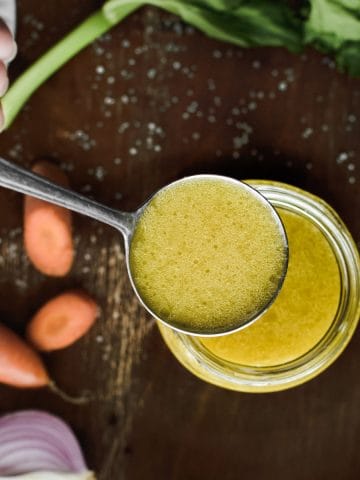
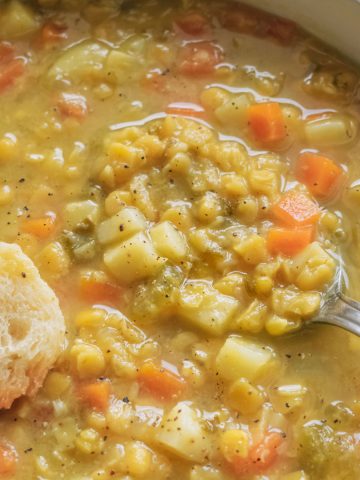
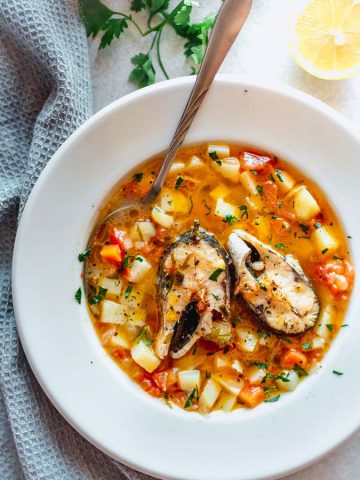


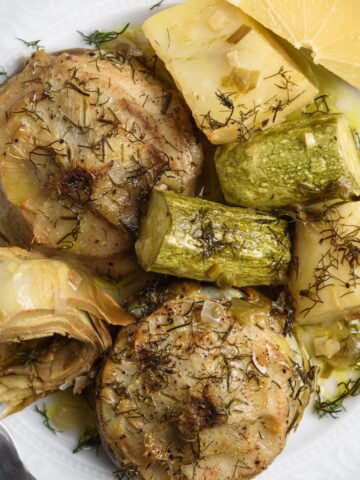


Leave a Reply